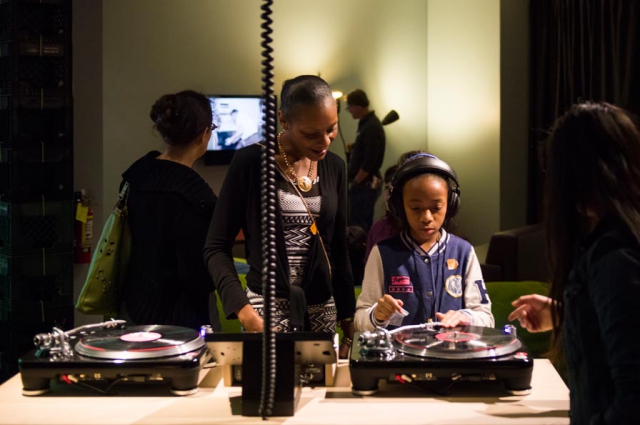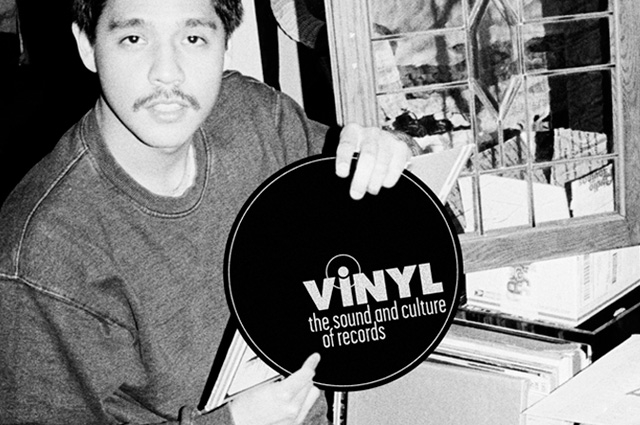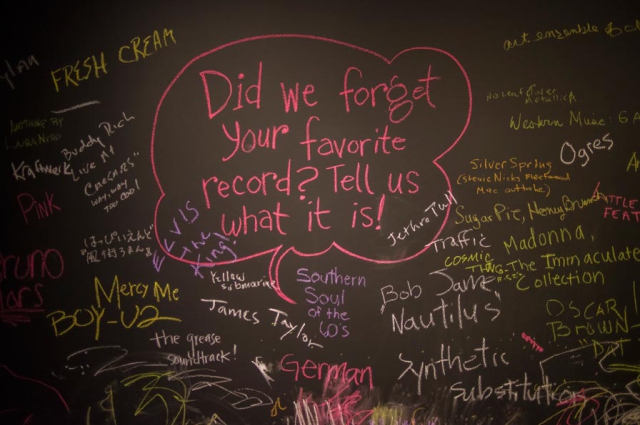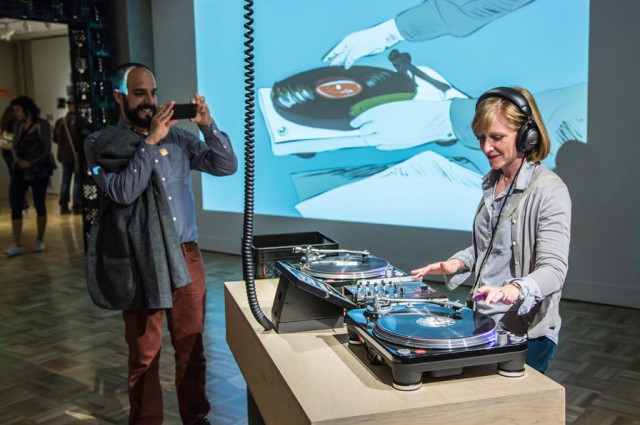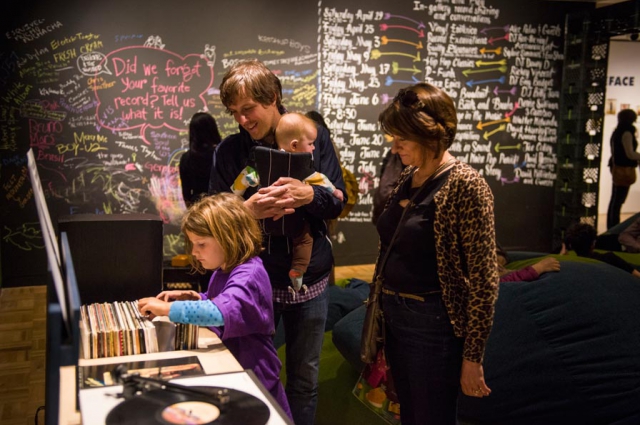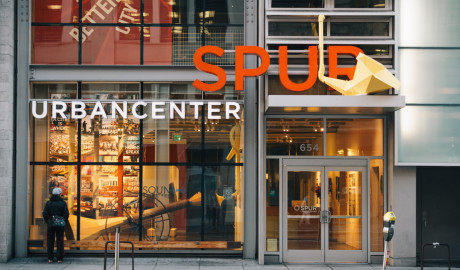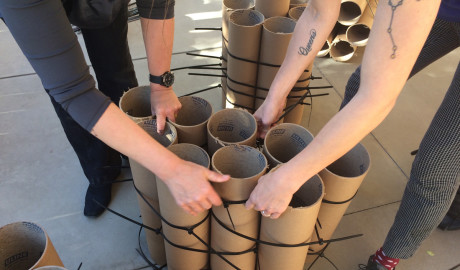Vinyl
An exhibition at the Oakland Museum of California exploring the cultural meaning and social experience of vinyl records.
The Oakland Museum of California recently invited us to be guest designers for an exhibition entitled “Vinyl: The Sound and Culture of Records.” Working with Senior Curator René de Guzman, Senior Exhibition Designer Scott Moulton and the excellent museum staff, we created a multifaceted exhibition that explored the layered cultural import of vinyl records, including the simple and kinetic act of dropping the needle, the burning obsession of the collector and the meaning of an essentially social medium of musical enjoyment, one that requires a physical space to spin and listen.
The exhibition was successful in quantitative terms of the number of visitors to the show, as well as qualitatively, as we created a gallery in which to experience, remember. celebrate (and perhaps mourn a little bit) the cultural shift from spatially-enacted analog vinyl to the new digital media. In the words of the curator:
The digital age has undeniably transformed how we experience music. We instantaneously download songs from iTunes, create customized music channels on Pandora, participate in global music sharing networks, and carry vast song libraries in the palm of our hand. We can now listen to music all the time, from anywhere, as much or as little as we want. The power and ease of this Star Trek-magical digital universe are compelling and irresistible.
Yet records, a pre-digital analog format, persist. In fact, they seem to be experiencing a bit of resurgence. New record enthusiasts are growing, specialty record stores are popping up in cities across the country, and contemporary musicians are increasingly releasing records as a normal course of business. Vinyl: The Sound and Culture of Records explores this enigma.
As we developed this project, members of the record community provided key insights. Some argued that records are richer and more satisfying because they play a wider range of sound. Others have said that records offer a kind of multi-dimensional artistry that digital formats cannot. The album is a set of songs that together build a larger artistic statement. The liner note lyrics offer access to the poetry of the written word. The album cover and record serve as a platform for design and visual art. Lastly, the ritualistic nature of handling the record satisfies a human need to connect with the physical world.
In the midst of this range of explanations, a theme arose that ultimately informed Vinyl’s core idea. Namely, that the record is a catalyst for social interaction and community. Records are passed from one person to another. In record stores, we don’t think twice about speaking with a clerk or another customer for recommendations. And we often play records for others in the room. Records inspire human contact while the digital music experience offers us independence from one another.

